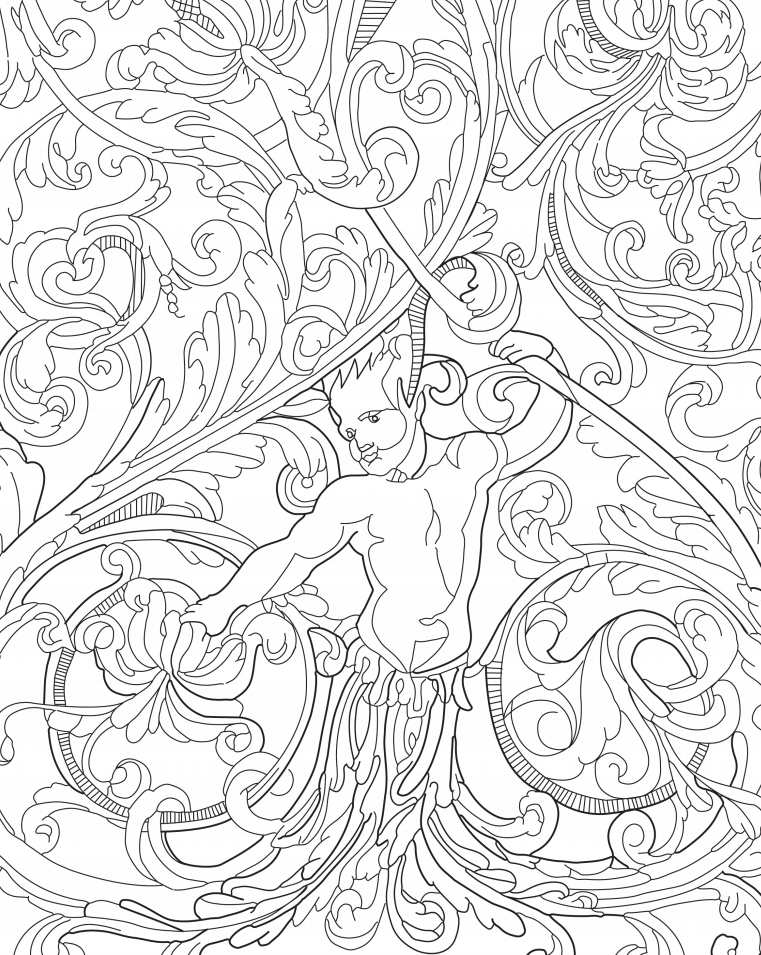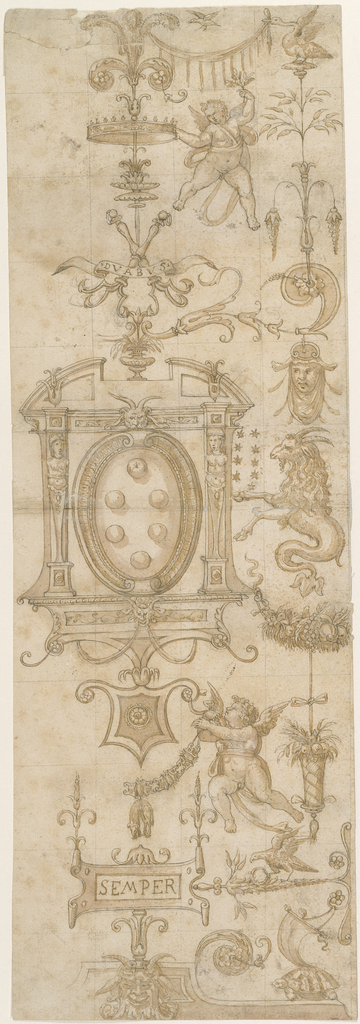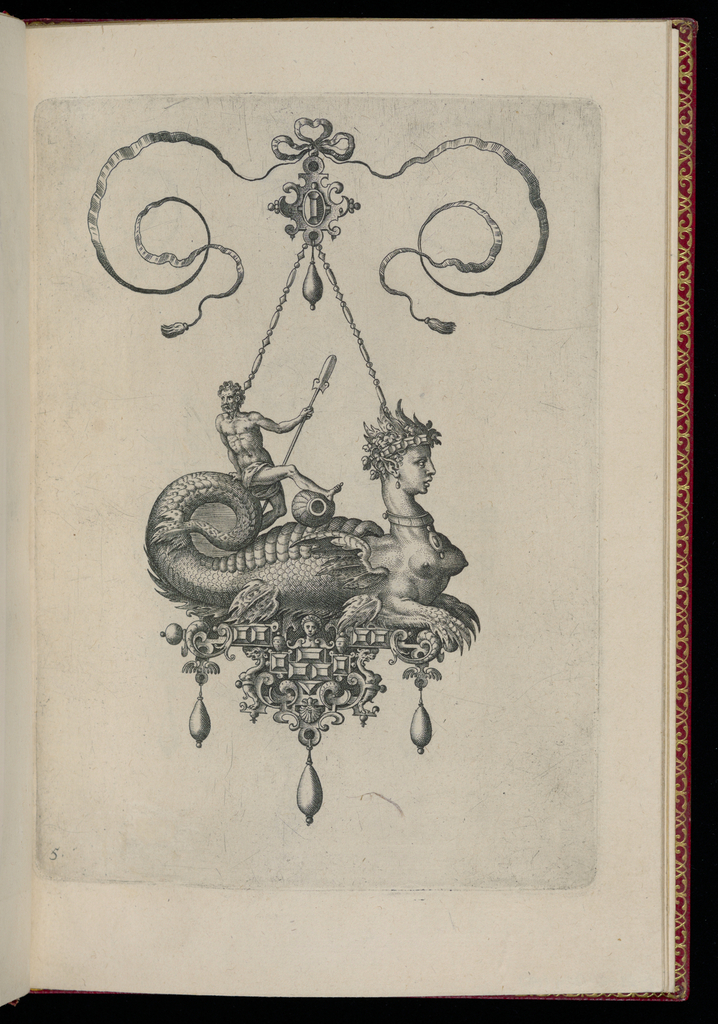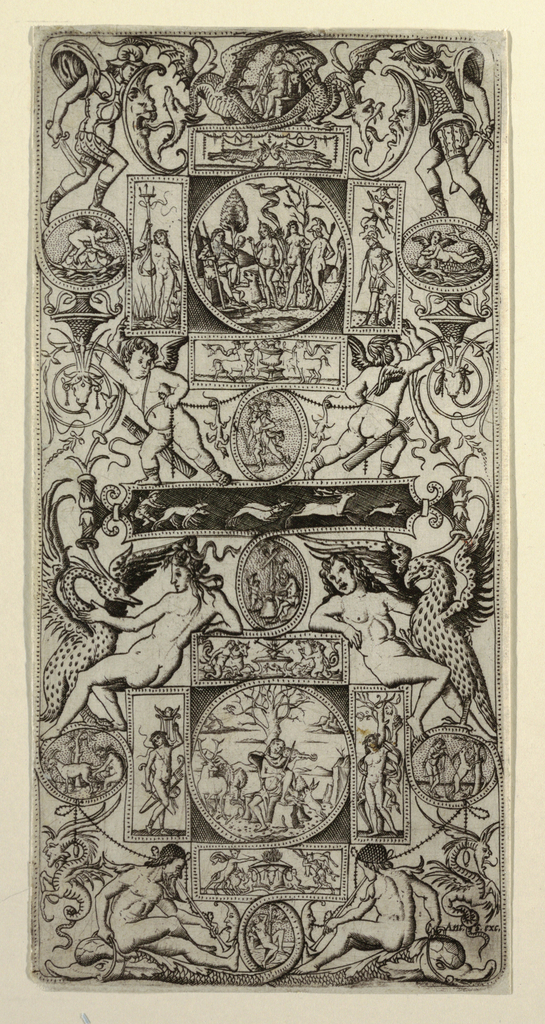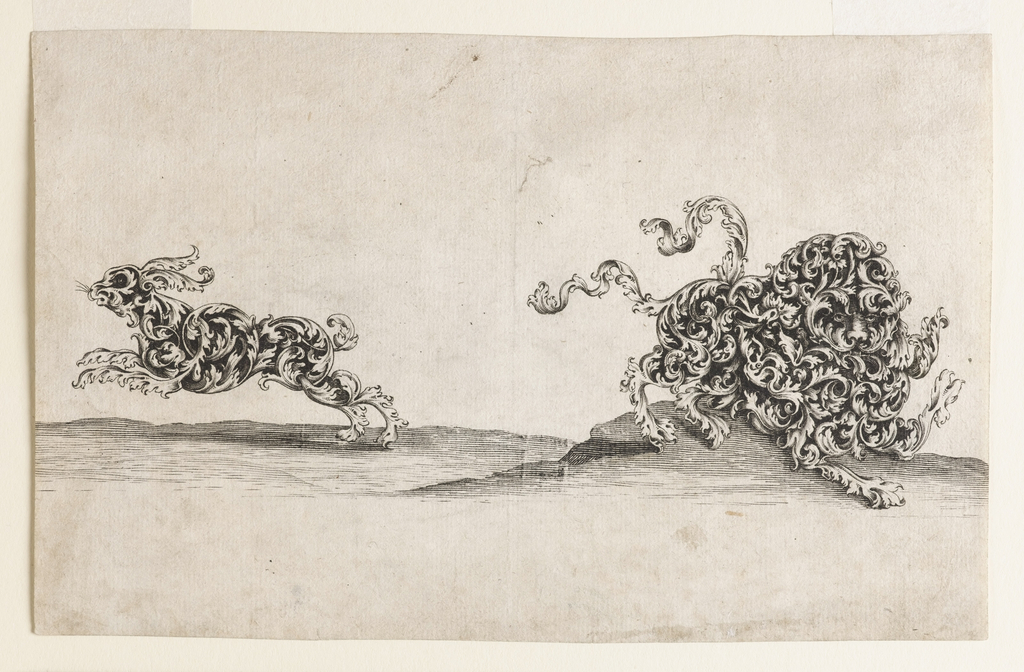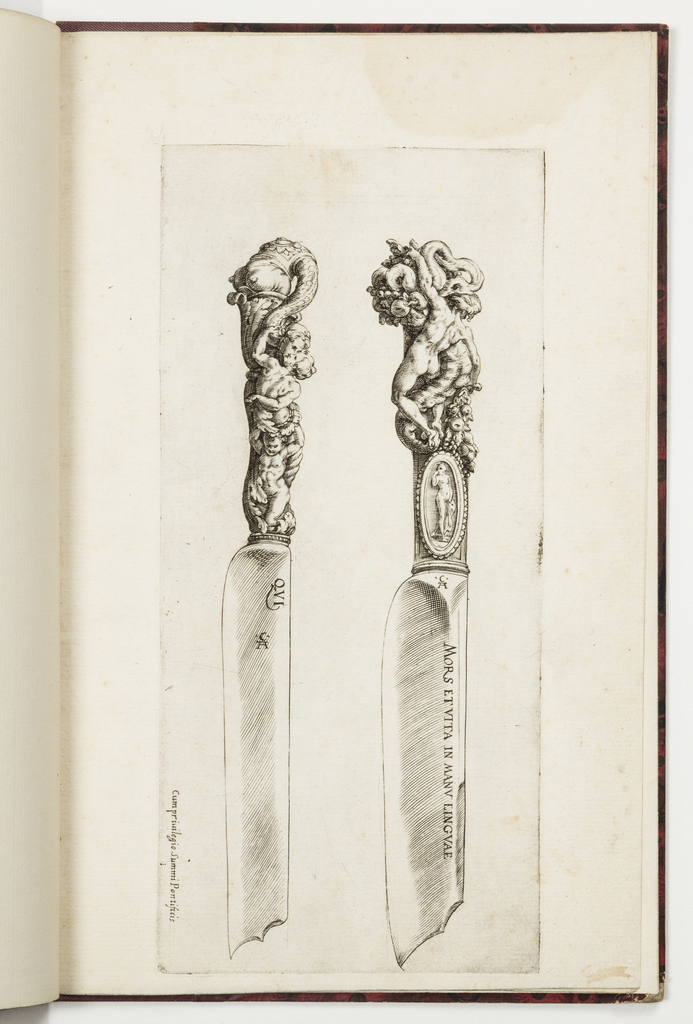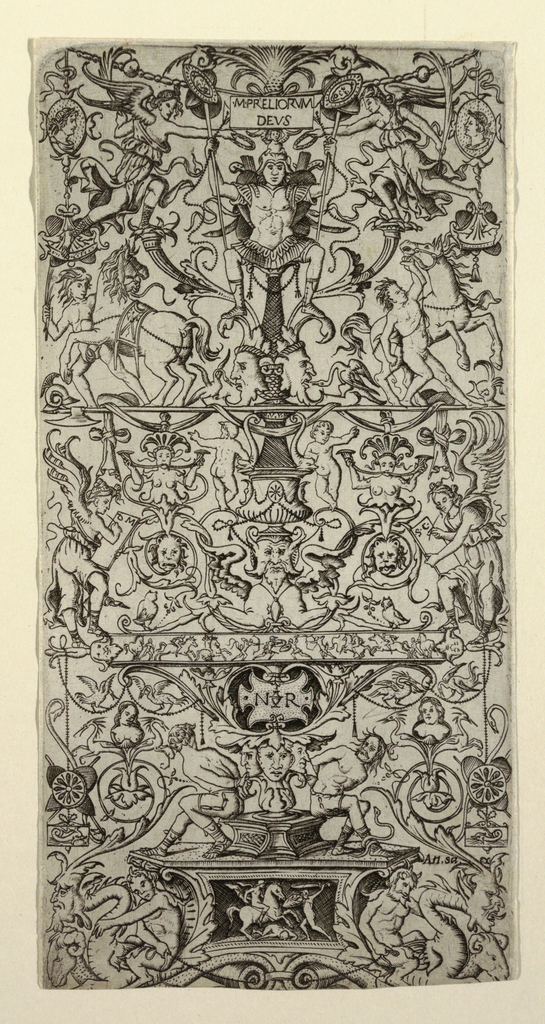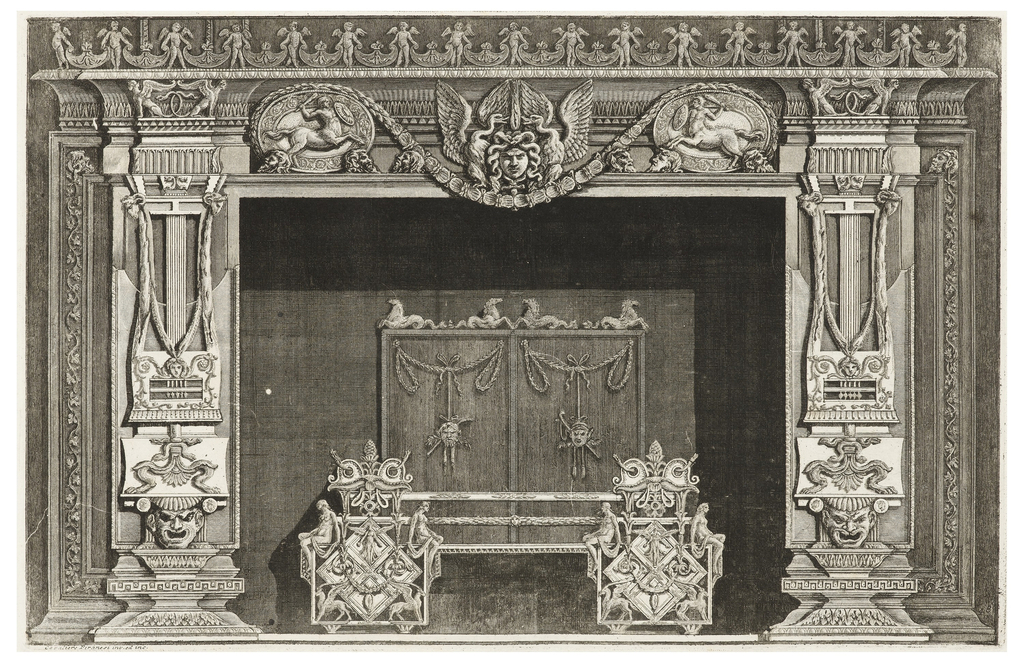Discover your own fragile beasts as you color in delicate designs adapted from the prints and drawings now on view. The Fragile Beasts Coloring Book is available at SHOP Cooper Hewitt. Start coloring with these free, printable pages from the book:
Lecture by Sarah Grant, Curator in the Word and Image department of London’s Victoria & Albert Museum. Talk given in conjunction with the exhibition ‘Fragile Beasts’ (on view at Cooper Hewitt June 10, 2016 through January 16, 2017). In this talk Sarah Grant gives an overview of the grotesque in all its many fanciful and...
What do balls, goats, and turtles have in common? …They’re all symbols of a powerful man. In 1570, Cosimo I de’ Medici opened the Laurentian Library in Florence, realizing a decades-long project to house and promote his family’s vast collection of scholarly manuscripts.[1] This drawing shows a design for one of the library’s stained glass...
An oarsman reclines on a sphinx’s scaly tail in this design for a pendant. Enameled, bejeweled, and dangling from a noblewoman’s gown, the imperious sphinx would appear fully tamed. Like the other marine monsters in this series of pendant designs by Hans Collaert, she symbolizes the sea’s abundance, harnessed by Flemish fishermen and merchants. These...
Some of the most common elements found in grotesque designs are pairs of contorted nudes known as ignudi (plural of ignudo). In many designs, figures assume postures that are variations or counterposes of their lateral mate’s. Like the grotesque motif itself, these compliant figures invite the artist to invent, exaggerate, and rearrange their parts into endless...
A lion and a hare are composed entirely of scrolling acanthus leaves in this late-seventeenth-century engraving. It is the fifth plate from a suite of six designs for gold ornament, entitled Neu-ersonnene Gold-Schmieds Grillen (New Designs for Ornaments in Gold). The acanthus motif, whose origins date to ancient Greece and Rome, was omnipresent in European...
“Death and life are in the power of the tongue,” warns a proverbial inscription on a knife blade imagined by Francesco Salviati. Knife handles further illustrate the tongue’s pleasures and perils, and these sensuous yet violent scenes seem to caution diners about to indulge. On one handle, a figure risks a snakebite to reach into...
Have you ever wondered where you could find a spotted, two-legged creature with the body of a lizard, the ears of a goat, the wings of a bird and the claws of a chicken? How about a monster with the head of a dolphin, ears of acanthus leaves, the body of a snake, and a tail...
This print comes from Giovanni Battista Piranesi’s Diverse maniere d’adornare I cammini ed ogni altra parte degli edifizi, published in 1769. Piranesi created designs inspired by ancient Roman aesthetic principles, which adopted elements of Egyptian, Grecian, and Etruscan motifs until fully absorbing them as their own. In this work particularly, Piranesi included motifs straight from...
